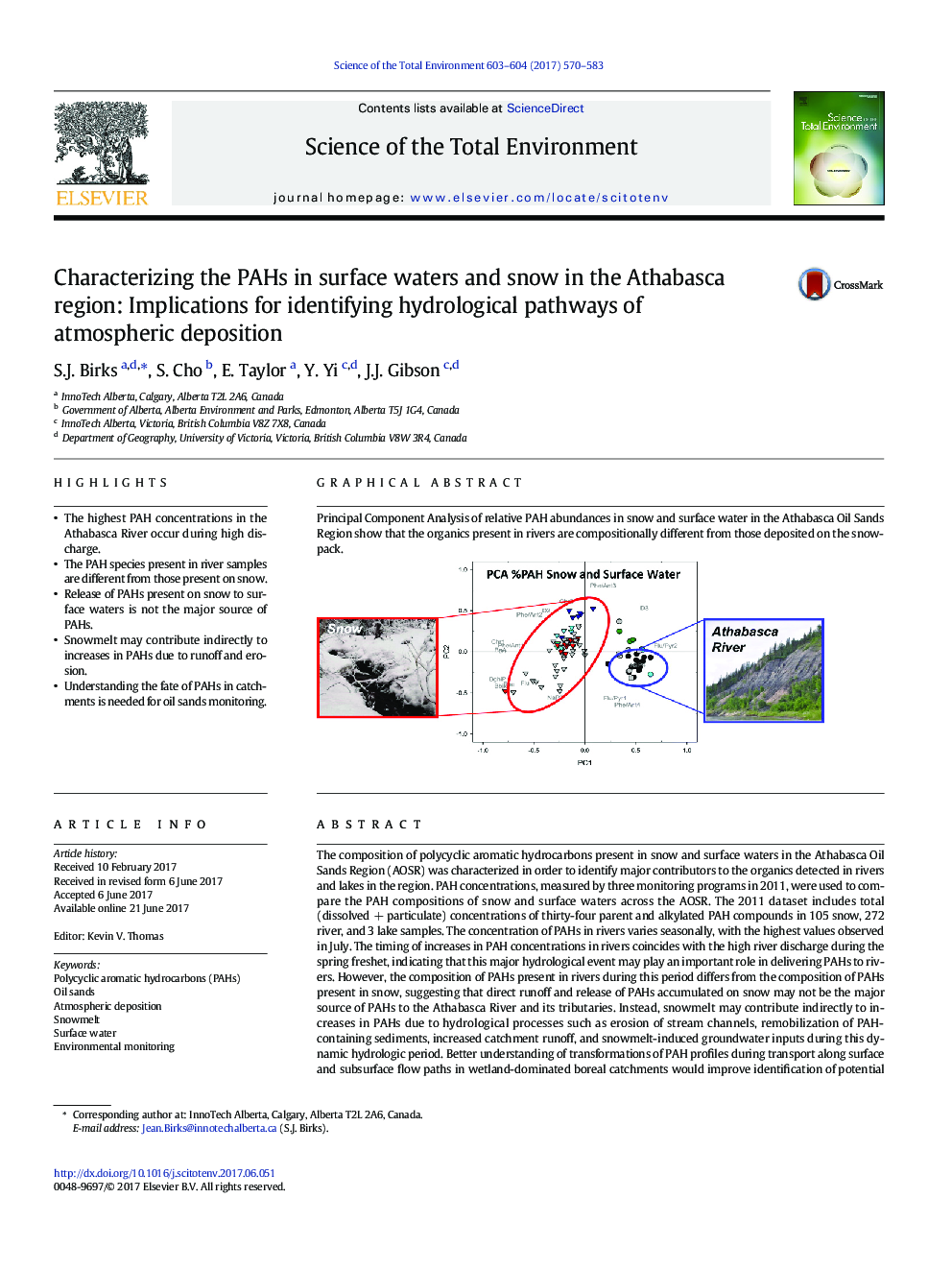| کد مقاله | کد نشریه | سال انتشار | مقاله انگلیسی | نسخه تمام متن |
|---|---|---|---|---|
| 5750328 | 1619696 | 2017 | 14 صفحه PDF | دانلود رایگان |

- The highest PAH concentrations in the Athabasca River occur during high discharge.
- The PAH species present in river samples are different from those present on snow.
- Release of PAHs present on snow to surface waters is not the major source of PAHs.
- Snowmelt may contribute indirectly to increases in PAHs due to runoff and erosion.
- Understanding the fate of PAHs in catchments is needed for oil sands monitoring.
The composition of polycyclic aromatic hydrocarbons present in snow and surface waters in the Athabasca Oil Sands Region (AOSR) was characterized in order to identify major contributors to the organics detected in rivers and lakes in the region. PAH concentrations, measured by three monitoring programs in 2011, were used to compare the PAH compositions of snow and surface waters across the AOSR. The 2011 dataset includes total (dissolved + particulate) concentrations of thirty-four parent and alkylated PAH compounds in 105 snow, 272 river, and 3 lake samples. The concentration of PAHs in rivers varies seasonally, with the highest values observed in July. The timing of increases in PAH concentrations in rivers coincides with the high river discharge during the spring freshet, indicating that this major hydrological event may play an important role in delivering PAHs to rivers. However, the composition of PAHs present in rivers during this period differs from the composition of PAHs present in snow, suggesting that direct runoff and release of PAHs accumulated on snow may not be the major source of PAHs to the Athabasca River and its tributaries. Instead, snowmelt may contribute indirectly to increases in PAHs due to hydrological processes such as erosion of stream channels, remobilization of PAH-containing sediments, increased catchment runoff, and snowmelt-induced groundwater inputs during this dynamic hydrologic period. Better understanding of transformations of PAH profiles during transport along surface and subsurface flow paths in wetland-dominated boreal catchments would improve identification of potential sources and pathways in the region. The compositional differences highlight the challenges in identifying the origins of PAHs in a region with multiple potential natural and anthropogenic sources particularly when the potential transport pathways include air, soil and water.
Principal Component Analysis of relative PAH abundances in snow and surface water in the Athabasca Oil Sands Region show that the organics present in rivers are compositionally different from those deposited on the snowpack.344
Journal: Science of The Total Environment - Volumes 603â604, 15 December 2017, Pages 570-583